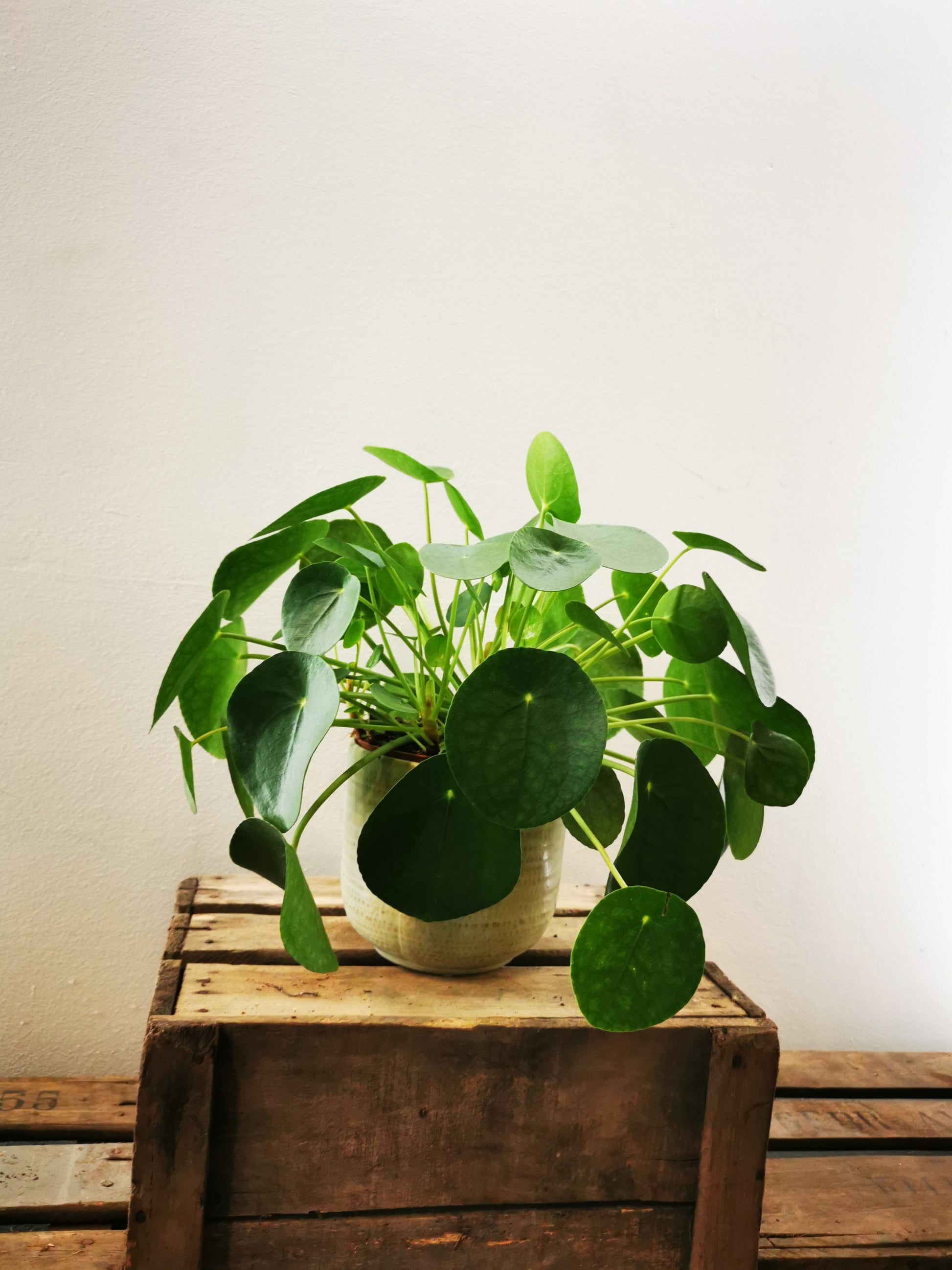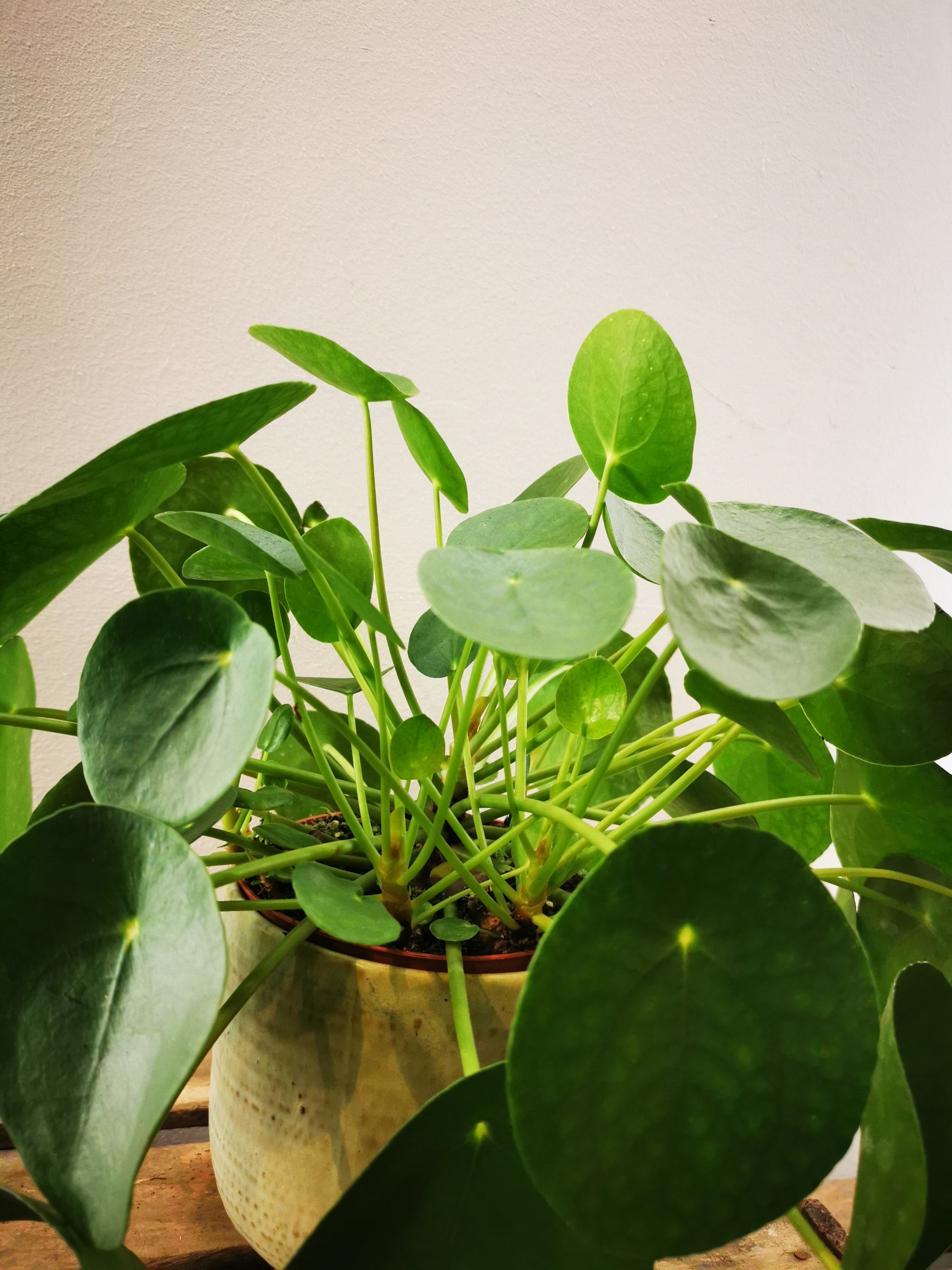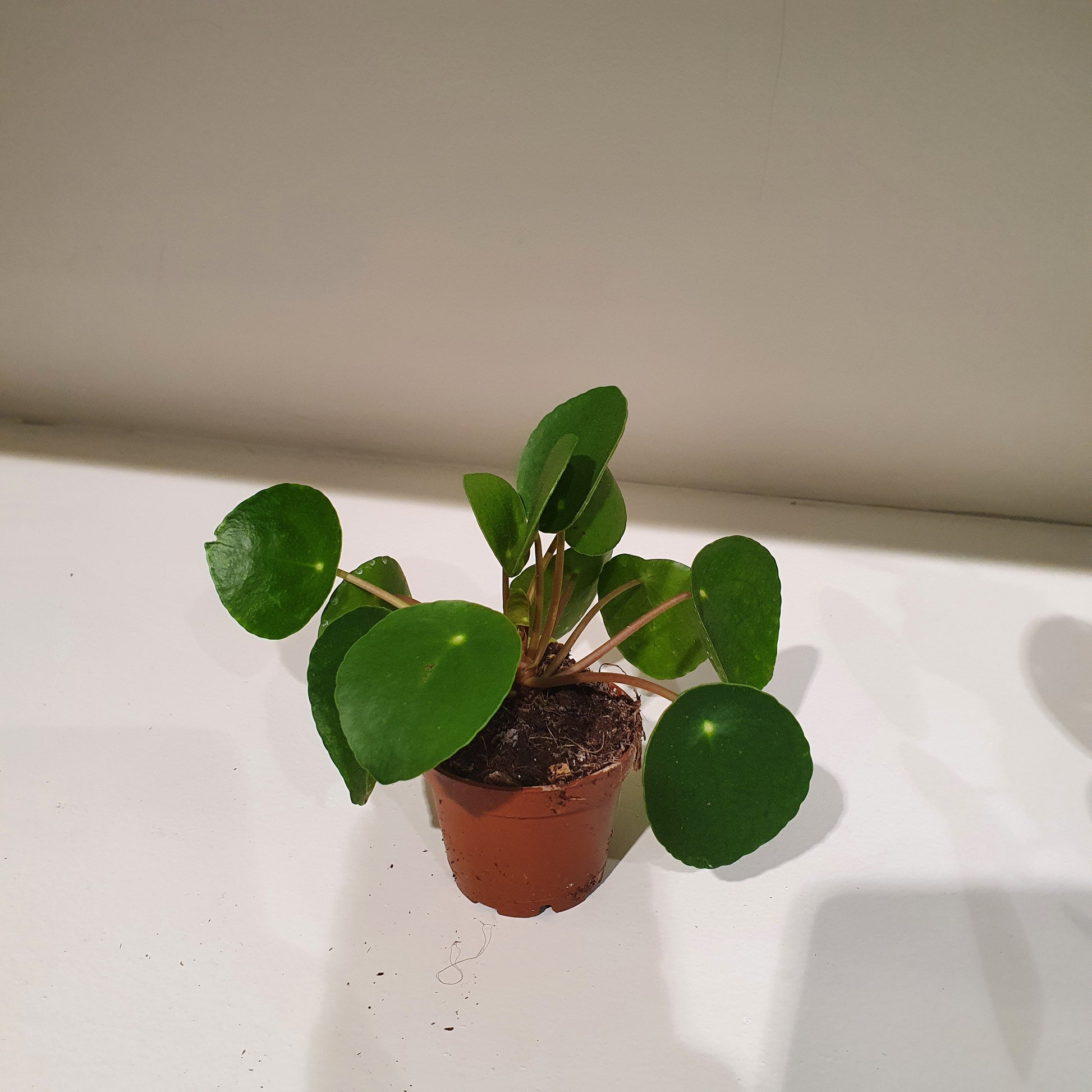Money plant (Pilea Peperomoides)
Money plant (Pilea Peperomoides)
In stock
Rated 4.9 ⭐ by 100 satisfied customers on Google
Couldn't load pickup availability
- Home delivery throughout Belgium
- Pick up in Leuven possible
- Nice name but not that tasty!
- Lifelong help for all your plant questions
The Pilea Perperomoides, also known as the Pancake Plant in common parlance, is a fun and easy houseplant. The plant enjoys places with a lot of indirect sunlight and regular watering so that it never completely dries out. With its round, flat, succulent leaves, it is a very beautiful, full plant.
The Pancake Plant is a plant that you can also easily propagate yourself, so that you can get a whole forest of Pancake Plants from one plant.
The picture shows a medium sized pancake plant. The size 'in between' is between small and medium.
If you’re looking for an easy-care, attractive plant, the Pilea is a great choice! Native to Asia and part of the Urticaceae family, this plant is known for its striking, round leaves that resemble pancakes. It grows along the edges of the Himalayas, making it well-suited to withstanding challenging conditions. Not only is it aesthetically pleasing, but it also grows quickly and requires little maintenance. This guide will tell you everything you need to know about caring for the Pilea.
Origin of the Pilea Peperomioides
The Pilea originates from China and belongs to the nettle family. After a peak in popularity in the 1970s, this plant has made a comeback in recent years. Its nickname comes from its round leaves, which can reach a diameter of 6 to 7 centimeters. The plant itself can grow up to 30 cm high, with its leaves resting on thin stems. The Pilea is known for being a ground cover, which means that it regularly produces new shoots next to the mother plant.
Various Pilea species
- Pilea Spruceana
- Pilea Glauca
- Pilea Involucrata
- Pilea Depressa
- Pilea Cadierei
- Pilea Nummulariifolia
- Pilea Peperomioides (Pancake Plant)
Need specific Pilea species?
Looking for a specific Pilea? Feel free to contact us, we can order almost any type for you. Order your Pancake Plant here!
Caring for the Pancake Plant
The Pilea is an easy plant to care for. Give it a little water weekly and provide sufficient light. In the summer you can give it extra plant food monthly.
Watering
This plant does not need much water. Watering lightly once a week is sufficient. Make sure the soil remains moist, but avoid standing water in the pot, as this can cause root rot.
Light and placement
The Pancake Plant likes light, but not direct sunlight. A spot near a northern window is ideal. Too much or too little light can cause discoloration or drying of the leaves.
Extra nutrition
During the summer months you can give the plant some liquid plant food monthly, although this is not strictly necessary. In the autumn and winter the plant does not need extra food, because it is dormant then.
Common problems
Are you having problems with your Pancake Plant? Here are some common symptoms and solutions:
- Yellow leaves : This can be caused by too much water or not enough light. Adjust your watering or lighting policy to solve this.
- Leaf loss : It is normal for the plant to lose leaves occasionally. However, check that there are no other causes, such as temperature changes or pests.
- Brown spots : These can be caused by too much direct sunlight, irregular watering, low humidity, or too much fertilizer. Move the plant to a more suitable location and adjust the care.
Is the Pancake Plant poisonous?
Fortunately, the Pilea Peperomioides is not toxic to humans or pets, making it safe in home environments. Although the plant is considered non-toxic, it is still wise to prevent children or pets from eating the leaves.
Cuttings of the Pancake Plant
Want more Pancake plants? Propagating this plant is easy! When small shoots grow next to the mother plant, you can carefully cut them off and place them in a glass of water. As soon as they get roots, you can plant them in potting soil and continue to care for them.
Any questions? Contact us at hello .plantrekkers @gmail .com or message us on Instagram @deplantrekkers!
Share
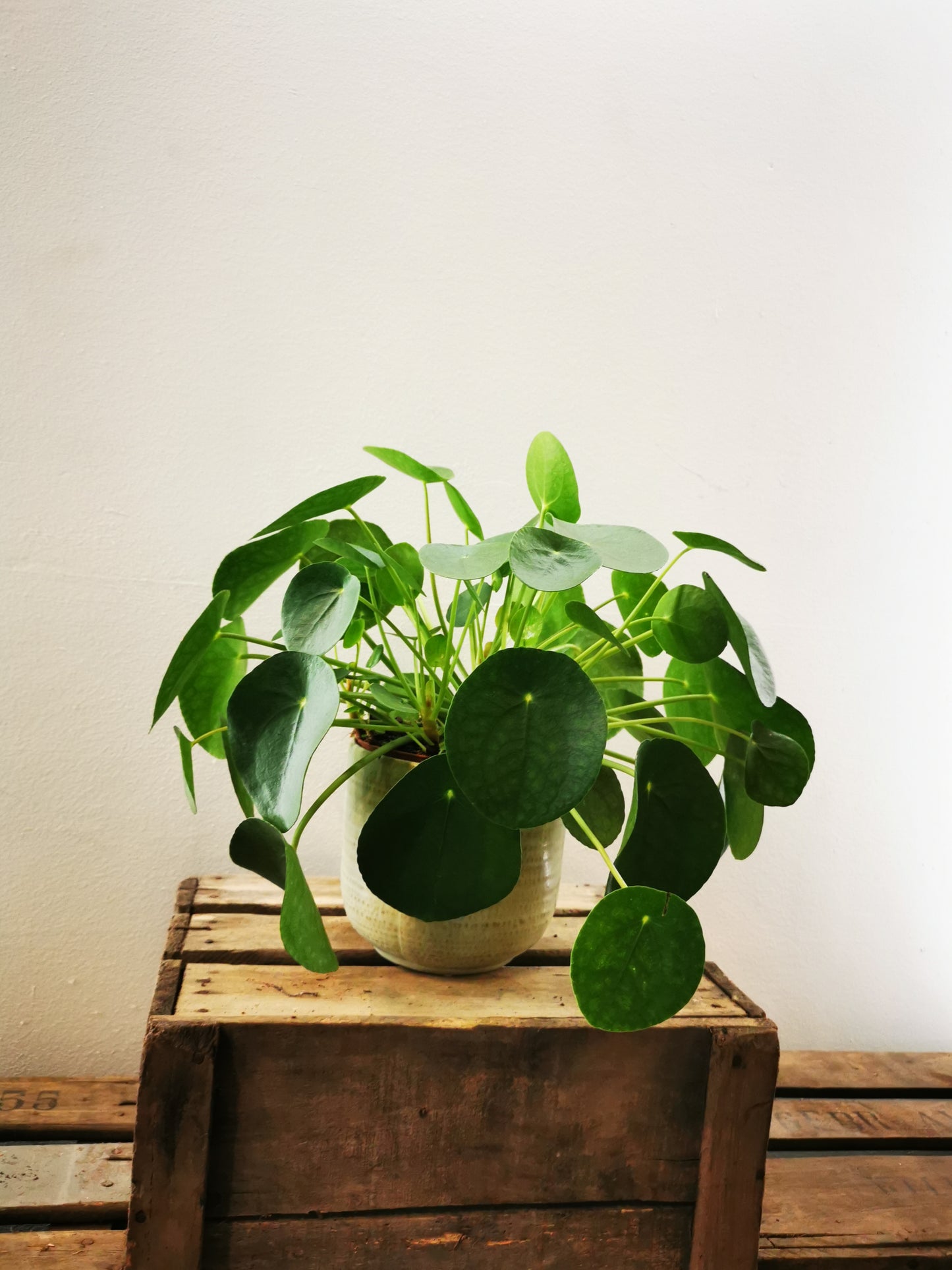
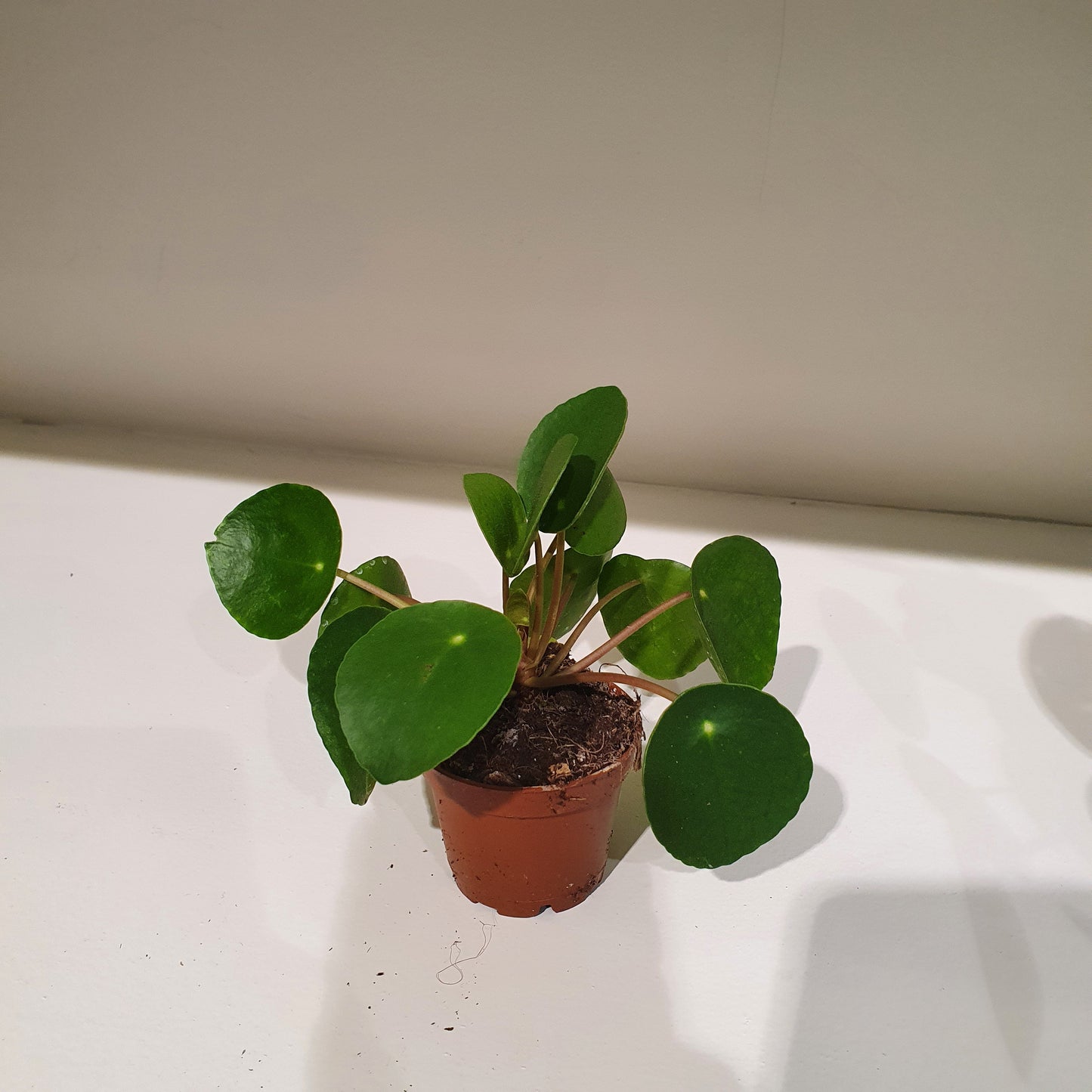

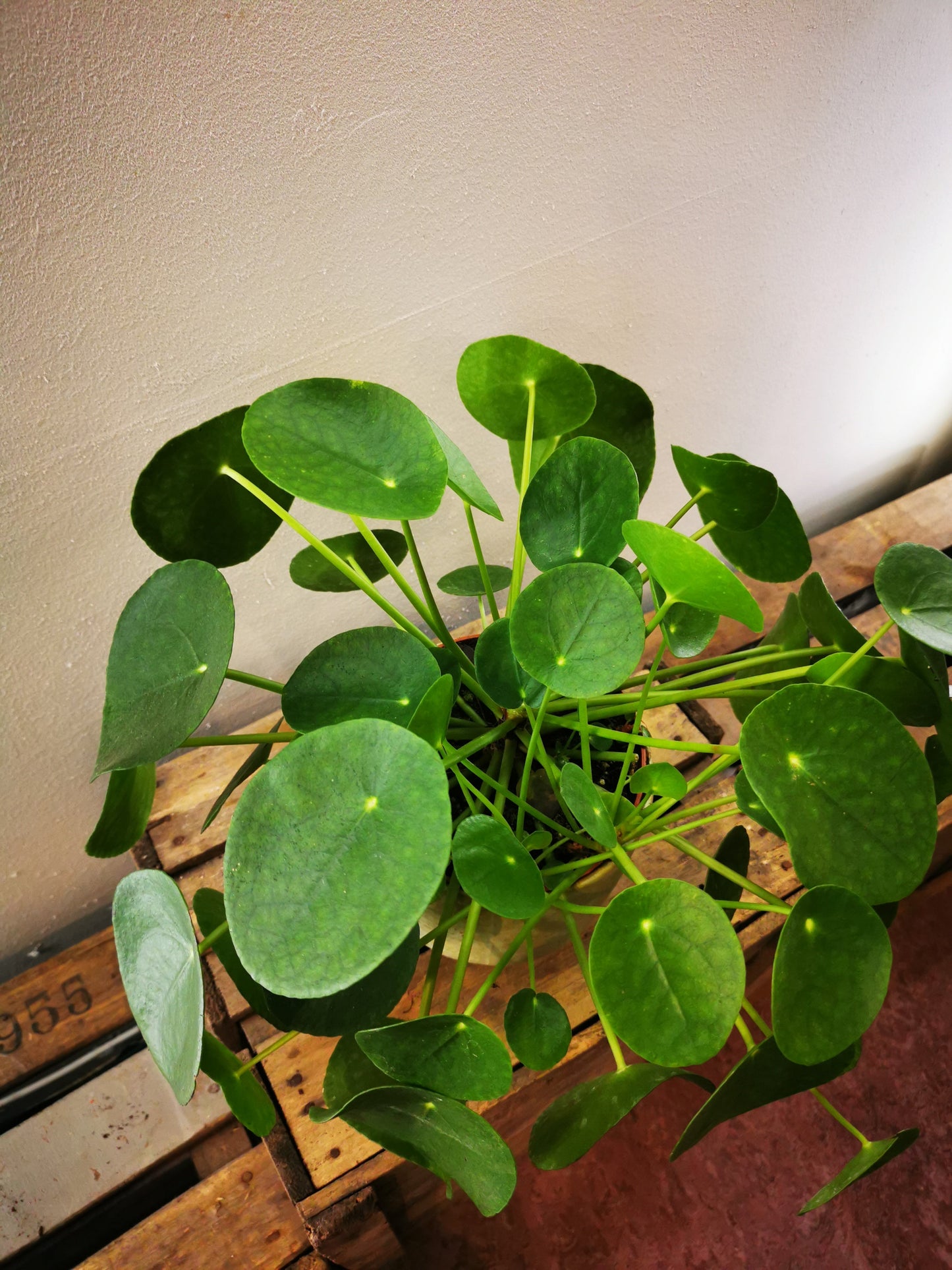
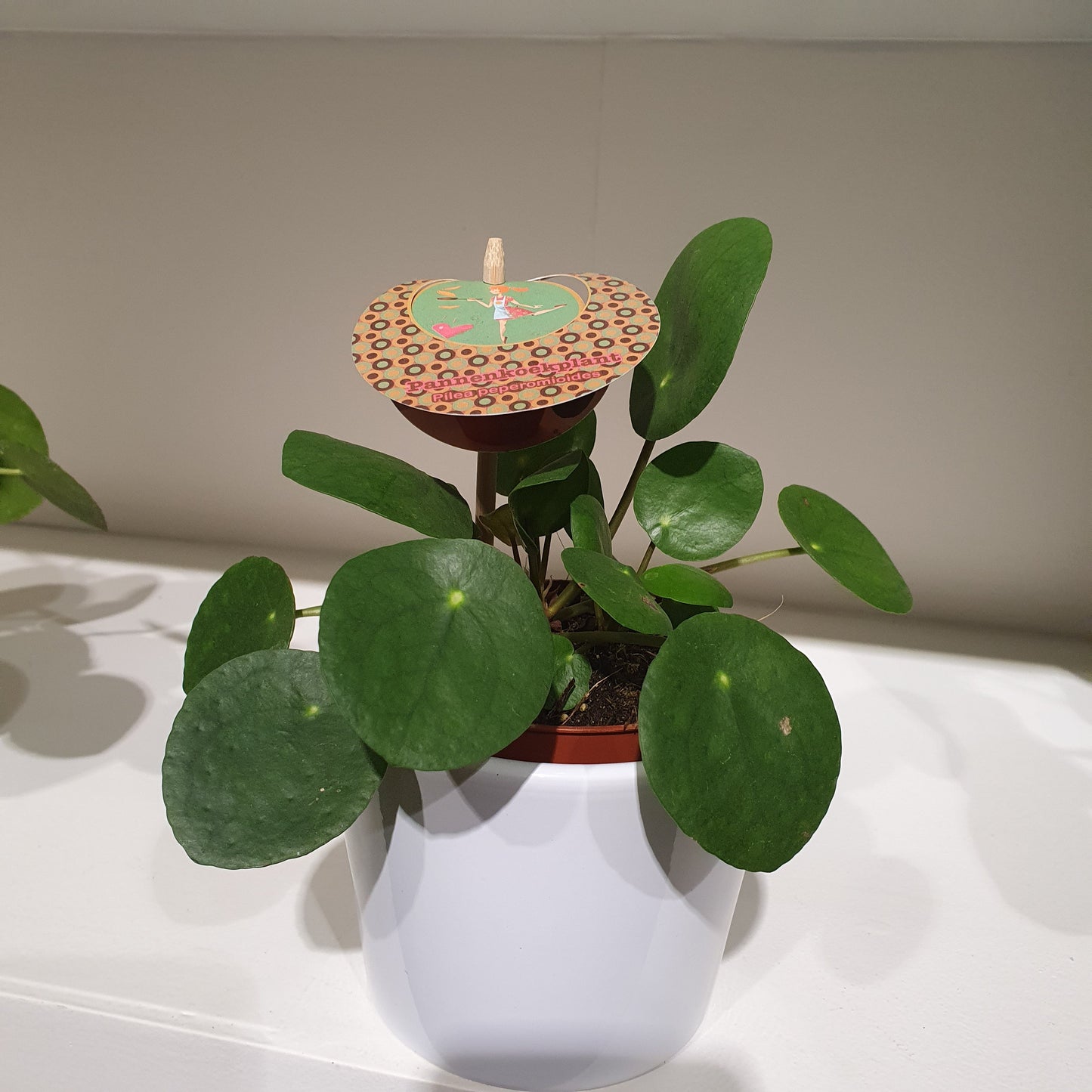
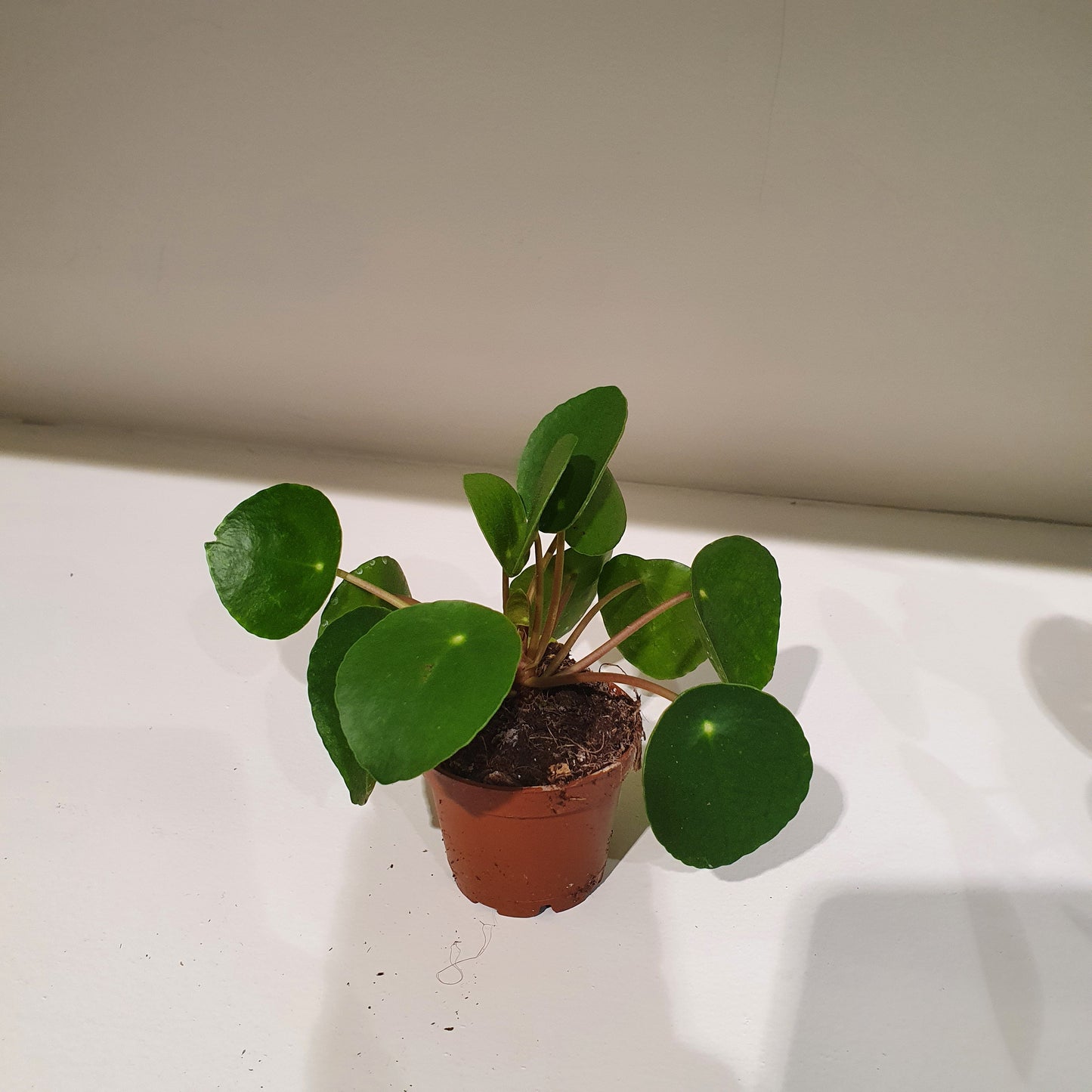
Frequently Asked Questions
How do you ship plants?
We always ship our plants well packaged and safely.
We do not ship on cold days and we also try not to ship during the weekends. This way plants are always in suboptimal conditions for a minimum time.
What is your shipping policy?
You can read our shipping policy here.
What payment methods do you accept?
We accept various payment methods online such as Bancontact, Visa, Mastercard, Paypal.
You can also pay with Ecocheques in our store in Leuven.
Can I return the products?
You can read our returns policy here.
Where do your plants come from?
Our plants always come straight from the grower to our shop. With minimal stops we prevent pests and diseases and keep the chain short!
Collections
-
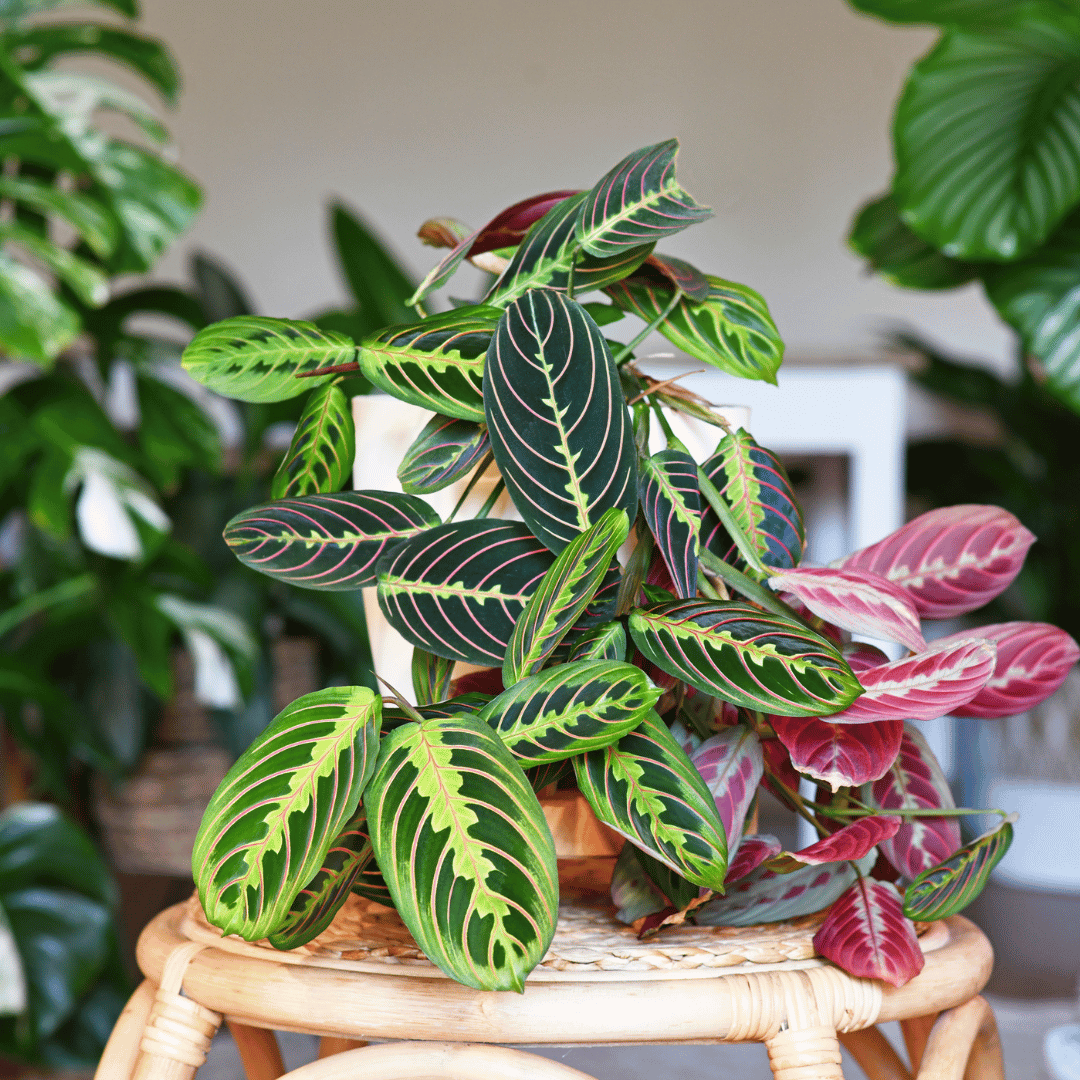
Buy Maranta's
Discover the unique charm of our collection of Maranta plants. With their...
-
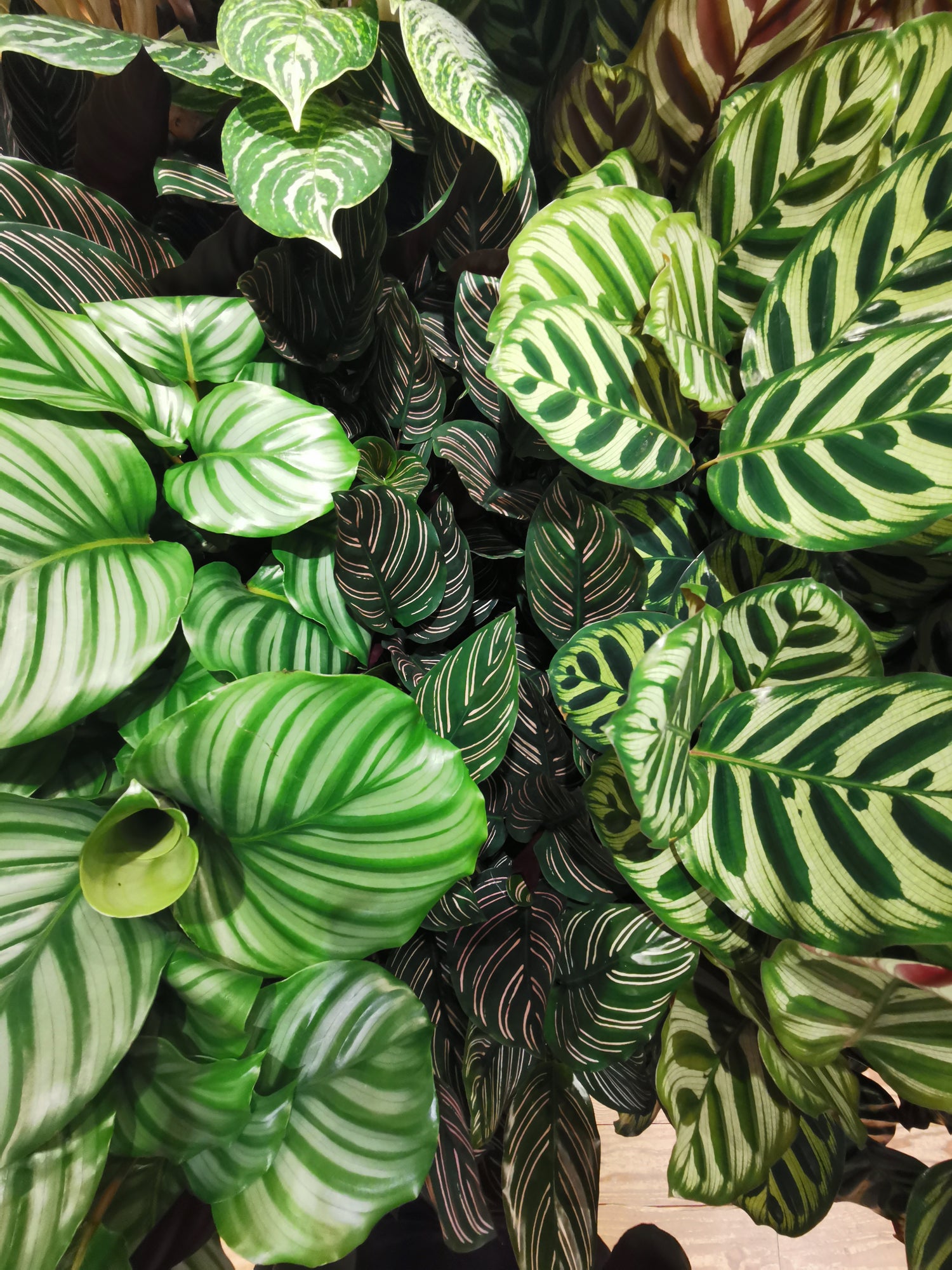
Buy Calatheas
Are you looking for a beautiful and unique houseplant that will purify...
-
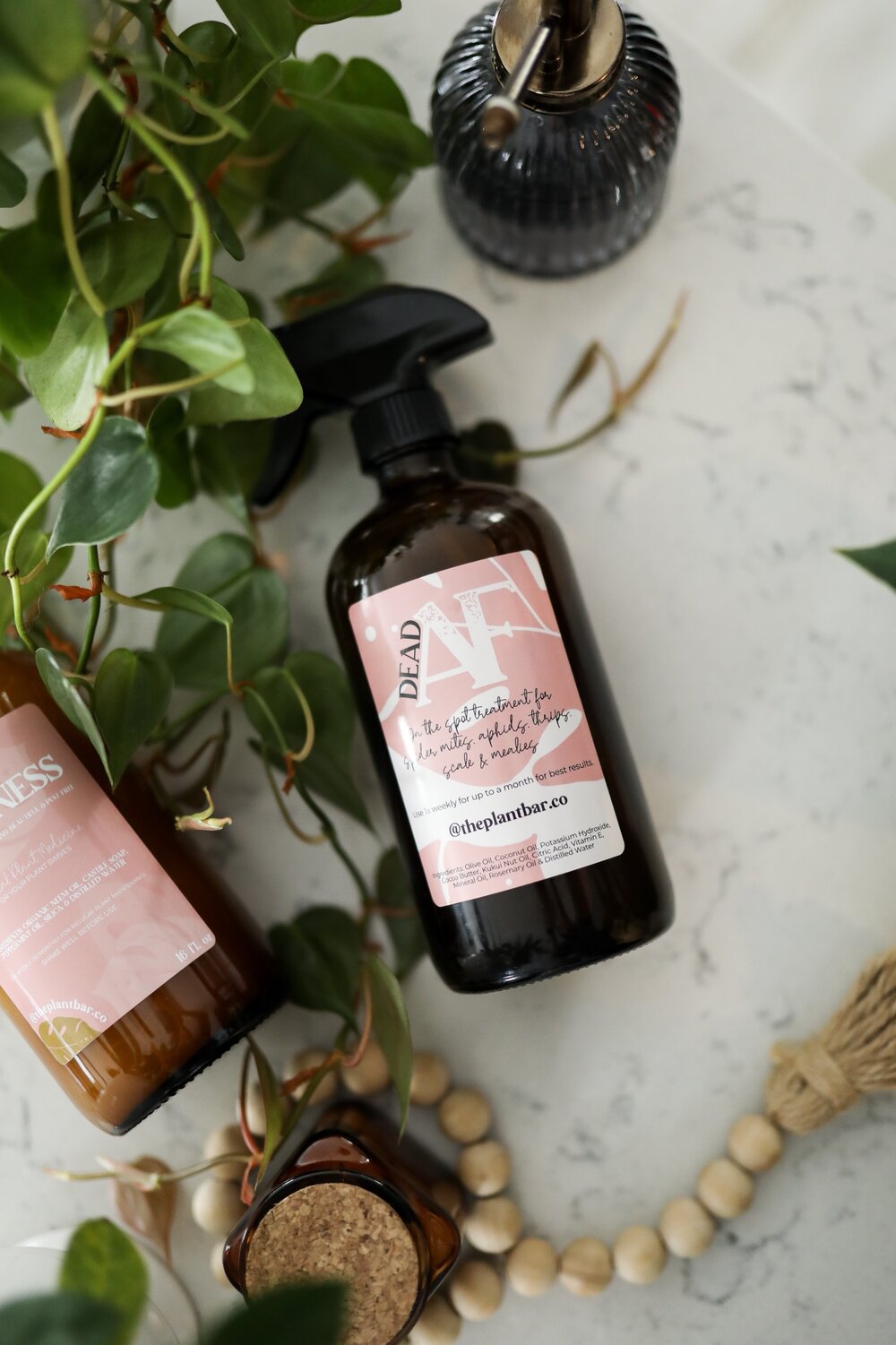
Accessories for Plant Lovers
In our store we have a wide variety of accessories to help...

